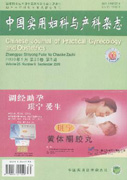Abstract:Objective To detect the expression of large conductance Ca2+ activated K+ channel(BKCa) in myometrium in patients with postpartum hemorrhage(PPH).Methods The levels of contractile frequency, amplitude and contraction of myometrium were detected by RM6240 biological experimental system; the BKCa(α, β subunit) protein expression levels in myometrium were detected by Western blot; the BKCa(α, β subunit) mRNA expression levels in myometrium were detected by real-time fluorescent quantitative reverse transcription-polymerase chain reaction for women with PPH caused by uterine atony(study group, n=30) and normal uterine smooth muscle contraction(control group, n=30).Results (1) In study group, the levels of myometrium contractile frequency, amplitude and contraction were lower than that of the controls(P<0.05). (2) In study group, BKCa (α, β subunit) protein and mRNA expression in myometrium were significantly higher than that of control group(P<0.05). (3) Both groups, the level of myometrium contraction was negatively related to BKCa (α, β subunit) protein, BKCa (α, β subunit) mRNA level in myometrium.Conclusion Increased BKCa expression in myometrium may be involved in the pathogenesis of PPH caused by uterine atony.

